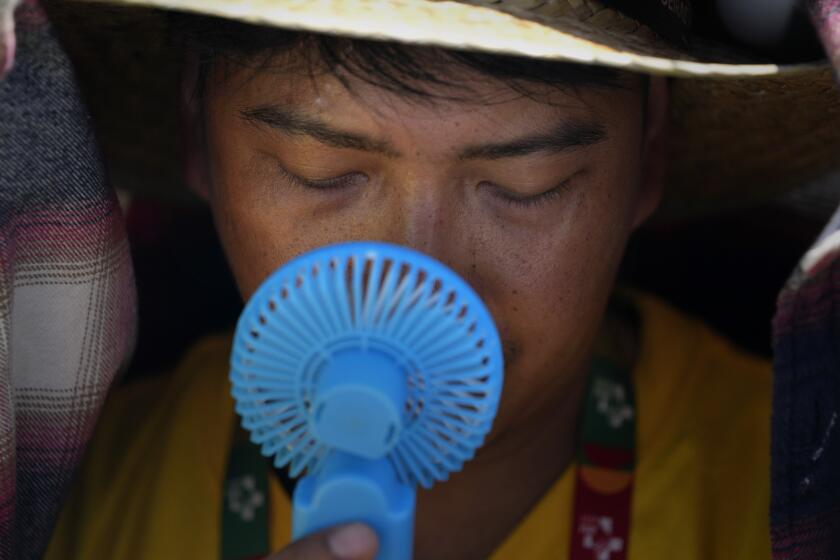Amphibians are the world’s most vulnerable animals and threats are increasing

- Share via
The world’s frogs, salamanders, newts and other amphibians remain in serious trouble.
A new global assessment has found that 41% of amphibian species that scientists have studied are threatened with extinction, meaning they are either vulnerable, endangered or critically endangered. That’s up from 39% reported in the last assessment, in 2004.
“Amphibians are the world’s most threatened animals,” said Duke University’s Junjie Yao, a frog researcher who was not involved in the study. “Their unique biology and permeable skin make them very sensitive to environmental changes.”
The study, published this month in the journal Nature, found that the loss of habitat from the expansion of farming and ranching is the single biggest threat to amphibians worldwide. But a growing percentage of amphibian species are now also pushed to the brink by novel diseases and climate change, the study found.
As climate change heats ocean water around coral reefs, scientists in Florida race to haul coral to safety in gene-bank tanks before they go extinct.
Amphibians are especially vulnerable animals. They have distinct life stages that each often require separate habitats, so they can be disrupted by changes in either aquatic or land environments, said University of Texas biologist Michael Ryan, who was not involved in the study.
They are also at risk because of their delicate skin. Most amphibians absorb oxygen to breathe through their skin, and so they do not have scales, feathers or fur to protect them. Chemical pollution, bacteria and fungal infections impact them quickly, as do heightened swings in temperature and moisture levels due to climate change.
For example, frogs are usually nocturnal. If it’s too hot, they won’t come out even at night because they would lose too much water through their skin, said Patricia Burrowes, a study co-author and researcher at the National Museum of Natural Sciences in Madrid. But remaining in sheltered resting places limits frogs’ ability to eat and to breed.
This summer was the hottest on record for the Northern Hemisphere, and 2023 is on track to be the second hottest globally, after 2016.
Earth is enduring its hottest-ever Northern Hemisphere summer, with a record August adding to a season of brutal and deadly temperatures.
Juan Manuel Guayasamin, a frog biologist at the University San Francisco of Quito, Ecuador, said that advances in technology to track animals and climate variations allowed the new study to use much more precise data than the 2004 assessment.
“We have a much better understanding of some risks,” said Guayasamin, who was not involved in the report.
The study identified the greatest concentrations of threatened amphibian species in several biodiversity hotspots, including the Caribbean islands, the tropical Andes, Madagascar and Sri Lanka. Other locations with large numbers of threatened amphibians include Brazil’s Atlantic Forest, southern China and the southeastern United States.
Toward a more sustainable California
Get Boiling Point, our newsletter exploring climate change, energy and the environment, and become part of the conversation — and the solution.
You may occasionally receive promotional content from the Los Angeles Times.
More to Read
Sign up for Essential California
The most important California stories and recommendations in your inbox every morning.
You may occasionally receive promotional content from the Los Angeles Times.














